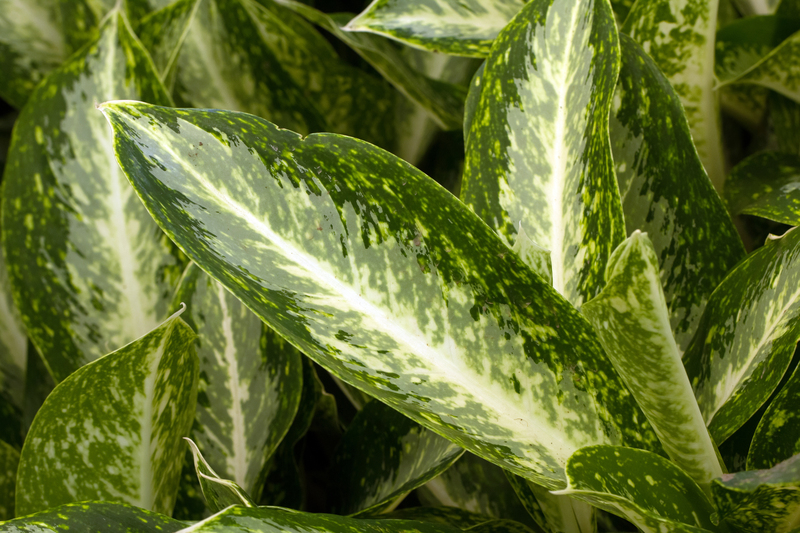Creating a Weather-Resilient Garden: Mastering the Art of Protection
Posted on 21/05/2025
Creating a Weather-Resilient Garden: Mastering the Art of Protection
Weather can be both a gardener's greatest asset and their toughest adversary. Blazing sun, chilling winds, torrential storms, and unexpected frosts can compromise even the most beautifully cultivated green spaces. In an era of increasing climate unpredictability, building a resilient, weatherproof garden is more essential than ever.
Why Weather-Resilient Gardening Is Critical
The consequences of changing weather patterns are evident: intense heat waves, prolonged droughts, unprecedented rainfall, and unseasonal temperature fluctuations. Mastering the art of protecting your garden from weather extremes not only secures your investment of time and love but also ensures sustainable, long-term harvests and blossoms. Weather-proof gardens adapt and thrive, reducing maintenance and replacement costs while supporting local ecosystems.
Main Benefits of a Weather-Proof Garden
- Reduced risk of plant loss due to unexpected weather events
- Lower maintenance needs and resource use (water, fertilizers, etc.)
- Increased productivity and aesthetic value
- Support for local wildlife and ecosystem balance
- Environmental stewardship in the face of climate change

Understanding the Weather Challenges
A weather-resilient garden starts with recognizing the most common climate threats in your area. Some key factors to consider:
- Wind: Can break stems, uproot plants, and dry out soil rapidly.
- Excessive Rain: Causes soil erosion, root rot, and nutrient leaching.
- Drought: Leads to water stress, wilting, and reduced growth.
- Frost & Cold Snaps: Damages tender plants, particularly in late spring or early fall.
- Heatwaves: Scorched foliage and heat stress can compromise plant health.
Understanding your unique microclimate--including wind patterns, sun exposure, and flood-prone areas--will help you design a comprehensive protection strategy and select the best plants for your garden's conditions.
Siting and Garden Layout: Build-In Protection
Physical design is your first defense when creating a climate-resilient garden. A thoughtfully planned layout can buffer against weather extremes.
Strategies for Weatherproof Garden Layouts
- Windbreaks: Use fences, hedges, or even temporary structures like trellis panels to shield vulnerable plants from strong winds. Consider native evergreens for year-round protection.
- Raised Beds & Terraces: These improve drainage during heavy rain, reduce soil compaction, and make covering plants in emergencies much easier.
- Strategic Plant Grouping: Group plants with similar watering and sunlight needs. Place sensitive plants where they'll be naturally protected by structures, trees, or larger shrubs.
- Mulching Pathways: Use gravel, wood chips, or bark in high-traffic or flood-prone areas to improve surface drainage and prevent landscape erosion.
Selecting Plants for a Weather-Resilient Garden
The heart of weatherproof gardening is plant selection. The most resilient gardens feature species that can tolerate your region's extremes.
How to Choose Weather-Resistant Plants
- Native Species: These are naturally adapted to local climate fluctuations and require less intervention for survival.
- Drought-Tolerant Plants: Lavender, sedum, yarrow, and ornamental grasses thrive in dry conditions.
- Flood-Resistant Options: Iris, swamp milkweed, and willows can handle occasional or prolonged wet soils.
- Wind-Resistant Planting: Choose sturdy, flexible species or those with deep roots, such as junipers and viburnum.
- Frost/Cold-Tolerant Varieties: Pansies, kale, hellebores, and certain ferns can withstand cold snaps.
For the most weather-resilient garden, combine a backbone of hardy perennials with a rotating cast of annuals that suit your microclimate each season.
Soil Care: Foundation of Weather Resilience
Excellent soil forms the cornerstone of any weather-resistant garden. A healthy, well-structured soil supports roots during heavy rains, heat spells, and droughts.
Soil Improvement Tips for Weather Protection
- Boost Organic Matter: Add well-aged compost or leaf mold to increase water retention and drainage.
- Mulch Generously: Cover soil with 2-4 inches of organic mulch (bark, straw, or chopped leaves) to insulate roots, retain moisture, and reduce erosion.
- Use Cover Crops: Sow legumes or clover in off-seasons to protect soil from rainfall and wind, while boosting nutrients.
- Test and Amend Regularly: Annual soil tests help you correct deficiencies or imbalances before stress hits.
- Maintain Living Roots: Never leave soil bare. Even groundcovers or winter annuals provide crucial protection.
Water Management: Defending Against Extremes
Both flood and drought events can devastate a garden. Adaptive water management systems are crucial for climate resilience.
Weather-Resilient Irrigation & Drainage Solutions
- Drip Irrigation & Soaker Hoses: These deliver water where it's needed most and minimize overhead evaporation, crucial during heatwaves or drought.
- Rain Barrels & Water Harvesting: Collect rainwater to use during dry spells--an eco-friendly and cost-saving measure.
- French Drains & Swales: Direct excess rain away from vulnerable beds, preventing root rot or soil erosion.
- Permeable Paving: Use these for walkways and patios so rain soaks in, not runs off, reducing the risk of flooding.
- Smart Soil Monitoring: Install moisture sensors to avoid over- or under-watering.
Physical & Seasonal Plant Protection
Even with the best planning, you may need physical interventions to guard your plants during severe weather events.
- Frost Cloths & Row Covers: Keep these handy for chilly nights or sudden frosts; use lightweight materials that don't crush plants.
- Shade Sails & Tunnels: These shield against harsh midday sun or hail storms while maintaining airflow.
- Cloche & Cold Frames: Protect young seedlings or tender vegetables from cold snaps and heavy winds.
- Staking & Supports: Use stakes, cages, or trellises to help top-heavy plants withstand winds.
- Temporary Fencing: Install around new plantings or exposed beds to deflect debris during storms.
*Tip:* Prepare emergency protection kits in advance--rolled row covers, stakes, and sandbags--to be ready for sudden weather changes.
Integrated Pest & Disease Management
Unpredictable weather can make your garden more vulnerable to pests and diseases. A weakened or water-stressed plant is an easy target.
Resilient Garden Tips for Pest and Disease Control
- Promote Biodiversity: Mix plant species, especially flowers that attract beneficial insects like ladybugs and lacewings.
- Rotate Crops: Annual rotation keeps soil pests and pathogens at bay.
- Inspect Regularly: Check for pest outbreaks after weather events--especially after storms or heatwaves.
- Use Barriers: Row covers not only protect from frost but also deter insects and wildlife.
- Encourage Natural Predators: Build in birdhouses or ponds to attract birds and amphibians, your natural pest control allies.
Long-Term Strategies for Climate-Resilient Gardening
Turning your garden into a true climate-resilient landscape is a long-term commitment. Here's how to fortify your garden's defenses with ongoing improvements:
- Regular Assessment: After each season or major weather event, review what worked and what needs adjusting in your planting and protection plans.
- Embrace Diversity: The more variety in plant forms, roots, and life cycles, the more buffers you build against total crop loss.
- Mulch and Amend Routinely: Healthy, organic-rich soil is your most valuable ally against both floods and droughts.
- Community Knowledge: Connect with local gardeners or agriculture extension offices--they often have weather-specific advice for your region.
- Stay Informed: Use weather alerts and garden apps to track storms, frosts, and heatwaves so you can implement protective measures in time.
Common Mistakes When Creating a Weather-Resilient Garden
- Overlooking Microclimates: Failing to recognize sun traps, frost pockets, or wind tunnels can quickly undermine your garden's defenses.
- Neglecting Soil Health: All the protective structures in the world cannot compensate for poor-quality soil.
- Monoculture Planting: Relying on a few species increases vulnerability to pests and climate events.
- Improper Mulching: Too thin or poorly maintained mulch breaks down quickly and exposes roots.
- Reactionary Gardening: Waiting for disaster rather than preparing can mean the difference between survival and loss.
Garden Design for Weather Resilience: Creative Ideas
- Rain Gardens: Depressed planting beds with native moisture-loving species filter water and prevent runoff into storm drains.
- Edible Hedges: Berry bushes like currants and gooseberries make effective windbreaks and supply food.
- Living Walls: Vertical gardens on fences or walls buffer wind, shade patios, and insulate buildings.
- Multi-Layered Borders: Combine trees, shrubs, groundcovers, and perennials in "layers" for support and shelter.
- Rock Gardens: Use stones and drought-tolerant succulents for areas most exposed to sun and wind.

Sustainable Practices for a Future-Proof Garden
Building a weather-resilient landscape is about working with nature, not against it. Integrated, sustainable gardening principles will help ensure lasting results, no matter what the forecast brings.
- Compost All Year: Create closed-loop fertility by returning garden waste to the soil.
- Limit Chemical Use: Natural pest control and organic amendments support a stronger, more adaptable garden ecosystem.
- Plant Trees: New trees not only provide shade and windbreaks but sequester carbon and boost wildlife habitats.
- Rotate and Rest Beds: Don't deplete soil--let sections rest fallow or with cover crops each year.
- Get Neighbors Involved: Community tree planting and shared rainwater collection strengthens local resilience for everyone.
Final Thoughts: Your Weatherproof Garden Journey
Creating a weather-resilient garden is an artful blend of planning, experimentation, and a deep understanding of nature's cycles. By embracing the right design strategies, plant choices, and sustainable practices, you'll enjoy a vibrant landscape that weathers every storm--and stands as a model for resilience in an unpredictable world.
Ready to begin? Start today by assessing your garden's risks, enriching your soil, and choosing a few tough native plants--and watch your landscape grow stronger, season after season.
For more tips on weatherproof gardening, subscribe to our newsletter or explore our companion guides to drought-tolerant landscaping, native plant selection, and sustainable water management.

